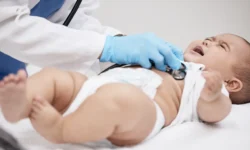These 5 risk factors can increase your chance of suffering a birth injury
No one ever expects they will face a birth injury when planning for the birth of a new baby. Yet, the reality is that each year many families face this reality, leaving their family facing a lifetime of questions, concerns and expensive medical care.
Many of the risk factors associated with birth injuries are completely uncontrollable. In some cases, however, health professionals don’t perform due diligence in addressing possible birth injury risk factors. Consequently, many infants are born suffering from birth injuries that could have been avoided.
Some of the most common preventable and non-preventable risk factors for birth injuries include the following:
1. Medical conditions
During the course of pregnancy, a woman may develop different medical conditions that could actually become causes of birth injuries. With proper diagnosis, it’s possible to mitigate the potential danger associated with these medical conditions.
In some cases, it may not be possible to treat the condition; however, even in such instances, a doctor will be able to monitor the mother carefully to limit potential risks.
2. Delivery position
The position in which the baby rests prior to delivery can have a tremendous effect on the difficulty of the labor as well as contribute to the possible risk for birth injuries. Certain positions make vaginal deliveries practically impossible.
Anytime a baby is in a difficult position that would make a normal vaginal delivery difficult, the mother should be informed so that options, including C-section, may be discussed.
3. Baby’s shape and size
The difficulty of labor increases with the size of the baby. When the birth weight of a baby is in excess of 9 pounds, the baby is referred to as macrosomic. In such cases, it may not be advisable to attempt a vaginal delivery.
For this reason, it’s crucial that doctors track the growth of the baby throughout the pregnancy and make possible recommendations for a C-section if it’s determined that the child’s birth weight might exceed 9 pounds. Not only is the baby at an increased risk for birth injuries in a macrosomic case, but the incident rate for maternal death also increases.
In other cases, it may become more difficult to achieve a successful delivery if the pelvis of the mother is shaped in a way that would complicate delivery. This can often result in the mother pushing for hours without being able to successfully deliver the baby.
When the baby is trapped in the birth canal for longer than normal, the baby may suffer from oxygen deprivation or even brain compression. This can lead to such birth injuries as cognitive, developmental and physical impairment.
Difficult births are also sometimes managed with the use of a vacuum or forceps, both of which may increase the risk for a birth injury.
4. Maternal conditions
In some cases, the mother may suffer from certain conditions that increase the potential for injury to both her as well as her baby without careful monitoring and prenatal care. Among those conditions is preeclampsia. With preeclampsia, the mother may experience extremely high blood pressure that grows rapidly worse. This condition may result in the risk for birth injuries, such as brain damage and oxygen deprivation.
The presence of maternal infections, like syphilis or listeriosis, may also produce a higher risk for birth injuries occurring. Left untreated, a maternal infection could lead to decreased fetal oxygen supply and ultimately cerebral palsy.
Gestational diabetes may also lead to problems for the mother as well as the child, including preeclampsia, macrosomia and the risk for premature birth. When diagnosed properly, the presence of gestational diabetes can be managed in such a way that the risk of birth injury is not increased.
5. Medical mismanagement of birth injuries
When a parent is informed of a birth injury, it’s naturally heartbreaking. This is particularly true when finding out that it could have been prevented. Beyond the initial heartbreak, parents may have questions about how they will pay for medical care and what will happen to their child in the future if they aren’t able to lead a normal life.
In the event that a doctor failed to exercise due diligence and address the risk for birth injuries, and harm occurred as a result of that failure, the doctor may be determined to be negligent. When this is the case, the child’s parents may be able to file a claim under state law for medical malpractice. Parents of children who have suffered a birth injury should contact an attorney as quickly as possible.
Of course, no amount of financial compensation can change what has occurred, but parents may be able to recoup compensation to assist with:
- Expenses associated with medical treatment
- Lost income
- Long-term impairment
- Emotional and physical pain and suffering
If you believe that your child may have suffered an injury at birth as the result of the negligence of a medical professional, it’s crucial that you seek experienced legal representation. A birth injury attorney at Brown Trial Firm will be able to assess your case and answer questions you may have regarding the potential for obtaining fair compensation for the injury, pain and suffering your child has sustained.
Contact us today for your free consultation.
- Cerebral Palsy
- Caput Succedaneum and Cephalohematoma
- Neonatal Intracranial Hemorrhage (Childbirth Brain Bleeds)
- Hydrocephalus (Extra Fluid in the Brain Cavity)
- Cervical Dystonia
- Hemiplegia (Brain or Spinal Cord Injury)
- Hemorrhagic Stroke
- Neonatal Stroke
- HIE
- Periventricular Leukomalacia (PVL) Brain Injury
- Infant Seizures
- Spastic Diplegia (Spasticity in the Legs)
- Top Risks for Birth Injuries
- Fetal Alcohol Syndrome
- Facial Paralysis
- Spinal Cord Injuries
- Bell’s Palsy
- Brachial Plexus Nerves & Erb’s Palsy
- Klumpke’s Palsy
- G-Tubes for Newborns
- Medical Errors
- Cesarean Section & Birth Injury
- Negligence in Brain Cooling Treatment
- Craniosacral Therapy
- Occupational Therapy
- Speech Therapy
- Transition From Pediatric to Adult Healthcare
- Surgical Options for Spastic Cerebral Palsy
- Fetal Intolerance to Labor
- Jaundice (Kernicterus)
- Breech Position
- Placental Complications
- Umbilical Cord Problems
- Uterine Rupture
- Cervical Incompetence (Insufficiency)
- Blighted Ovum
- Necrotizing Enterocolitis (NEC) - Intestinal Inflammation
- Cephalopelvic Disproportion
- Meconium Aspiration Syndrome
- Amniotic Fluid Embolism
- Birth Injury from Premature Delivery
- Developmental Delays
- Abnormal Cord Insertion
- Infections at Birth
- Chorioamnionitis Bacterial Infection
- Premature birth
- Oxygen Deprivation
- Listeria
- Birth-Acquired Herpes
- Placenta Previa
- Placental Abruption
- Mismanaged Fetal Malposition
- Rapid Labor
- Obesity Related Birth Injuries
- Intrauterine Growth Restriction
- Blood Clots During Pregnancy
- Ectopic Pregnancy Misdiagnosis
- Myths & Facts About Birth Injuries
- Bacterial Vaginosis
- Gestational Diabetes
- Maternal Mortality Risk
- Oligohydramnios (Low Amniotic Fluid)
- Infections During Pregnancy
- Excessive Bleeding During Pregnancy
- Congenital Syphilis


